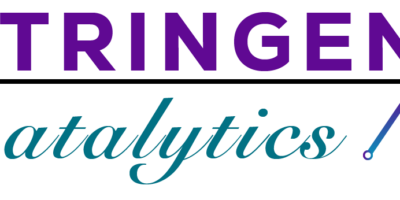Hypertrophic Cardiomyopathy (HCM) Therapeutics Market was estimated at USD 1.3 billion in 2020 and is likely to grow at a CAGR of 2.4% during 2021-2026 to reach USD 1.49 billion in 2026.
The Hypertrophic Cardiomyopathy (HCM) Therapeutics Market focuses on the development, approval, and commercialization of treatments for hypertrophic cardiomyopathy, a genetic heart condition characterized by abnormal thickening of the heart muscle. This thickening can obstruct blood flow and lead to a range of symptoms, including chest pain, shortness of breath, and risk of sudden cardiac death. The market includes a variety of therapeutic options, from medications to surgical interventions, aimed at managing symptoms, improving quality of life, and reducing the risk of severe complications.
Key Components and Market Drivers:
- Therapeutic Options for HCM:
- Pharmacological Treatments: The primary focus is on medications to manage symptoms and reduce complications. Key drug classes include:
- Beta-Blockers: Often used to manage symptoms like chest pain and palpitations.
- Calcium Channel Blockers: Help to reduce heart muscle contraction and improve blood flow.
- Antiarrhythmics: Used to manage arrhythmias associated with HCM.
- Myosin Inhibitors: Emerging therapies that target the contractile proteins in heart muscle, such as mavacamten and aficamten, which have shown promise in clinical trials.
- Surgical and Interventional Options: For patients with obstructive HCM or severe symptoms, surgical options include:
- Septal Myectomy: A surgical procedure to remove a portion of the thickened septum (the wall dividing the left and right sides of the heart).
- Alcohol Septal Ablation: A minimally invasive procedure that involves injecting alcohol into the heart muscle to reduce its thickness.
- Device-Based Therapies: Implantable devices, such as pacemakers or defibrillators, may be used to manage arrhythmias and prevent sudden cardiac death.
- Pharmacological Treatments: The primary focus is on medications to manage symptoms and reduce complications. Key drug classes include:
- Market Drivers:
- Increasing Prevalence of HCM: The growing recognition of HCM and improvements in diagnostic techniques are leading to more diagnoses and a greater need for effective treatments. The condition affects a significant portion of the population, contributing to the market’s expansion.
- Advances in Drug Development: Innovations in drug development, particularly with myosin inhibitors and other targeted therapies, are driving market growth. These new treatments offer hope for more effective management of HCM and improved patient outcomes.
- Rising Awareness and Diagnosis: Greater awareness among healthcare providers and patients, coupled with advances in genetic testing and imaging technologies, are leading to earlier and more accurate diagnoses, driving the demand for effective therapeutics.
- Investment in Research and Development: Increased investment by pharmaceutical companies and research institutions in HCM research is contributing to the development of new treatments and therapies, expanding the therapeutic options available in the market.
- Competitive Landscape and Market Trends:
- Key Players: The HCM therapeutics market is characterized by both established pharmaceutical companies and emerging biotech firms. Notable companies include:
- Myokardia (now part of Bristol-Myers Squibb): Known for its development of mavacamten, a promising myosin inhibitor for HCM.
- Novartis: Engaged in the development and commercialization of therapies for cardiovascular diseases, including HCM.
- Amgen: Focuses on cardiovascular therapeutics and has interests in HCM treatment options.
- Pfizer: Involved in cardiovascular drug development and research, including for HCM.
- Market Trends: There is a growing emphasis on personalized medicine, with treatments tailored to the genetic and clinical profiles of individual patients. The development of gene therapies and novel drug classes is expected to play a significant role in the future of HCM treatment.
- Emerging Therapies: Research is ongoing into new therapeutic approaches, including gene editing and novel small molecules that target specific pathways involved in HCM. These innovations have the potential to revolutionize the treatment landscape for HCM.
- Challenges: The market faces challenges including the high cost of advanced therapies, limited patient access to specialized care, and the need for ongoing research to better understand the condition and improve treatment outcomes. Additionally, the development of new treatments must navigate complex regulatory pathways and demonstrate clear clinical benefits to gain market acceptance.
- Key Players: The HCM therapeutics market is characterized by both established pharmaceutical companies and emerging biotech firms. Notable companies include:
Click Here, To Get Free Sample Report https://stringentdatalytics.com/sample-request/hypertrophic-cardiomyopathy-(hcm)-therapeutics-market/16517/
Market Segmentations:
Global Hypertrophic Cardiomyopathy (HCM) Therapeutics Market: By Company
AstraZeneca
Concordia International
Gilead Sciences
Merck
Mylan
Novartis
Pfizer
Sanofi
Teva Pharmaceutical Industries
Global Hypertrophic Cardiomyopathy (HCM) Therapeutics Market: By Type
Beta Adrenergic Blocking Agents
Calcium Channel Blockers
Antiarrhythmic Agents
Anticoagulants
Others
Global Hypertrophic Cardiomyopathy (HCM) Therapeutics Market: By Application
Hospital Pharmacies
Retail Pharmacies
Global Hypertrophic Cardiomyopathy (HCM) Therapeutics Market: Regional Analysis
The regional analysis of the global Hypertrophic Cardiomyopathy (HCM) Therapeutics market provides insights into the market’s performance across different regions of the world. The analysis is based on recent and future trends and includes market forecast for the prediction period. The countries covered in the regional analysis of the Hypertrophic Cardiomyopathy (HCM) Therapeutics market report are as follows:
North America: The North America region includes the U.S., Canada, and Mexico. The U.S. is the largest market for Cold-chain Pharma in this region, followed by Canada and Mexico. The market growth in this region is primarily driven by the presence of key market players and the increasing demand for the product.
Europe: The Europe region includes Germany, France, U.K., Russia, Italy, Spain, Turkey, Netherlands, Switzerland, Belgium, and Rest of Europe. Germany is the largest market for Cold-chain Pharma in this region, followed by the U.K. and France. The market growth in this region is driven by the increasing demand for the product in the automotive and aerospace sectors.
Asia-Pacific: The Asia-Pacific region includes Singapore, Malaysia, Australia, Thailand, Indonesia, Philippines, China, Japan, India, South Korea, and Rest of Asia-Pacific. China is the largest market for Cold-chain Pharma in this region, followed by Japan and India. The market growth in this region is driven by the increasing adoption of the product in various end-use industries, such as automotive, aerospace, and construction.
Middle East and Africa: The Middle East and Africa region includes Saudi Arabia, U.A.E, South Africa, Egypt, Israel, and Rest of Middle East and Africa. The market growth in this region is driven by the increasing demand for the product in the aerospace and defense sectors.
South America: The South America region includes Argentina, Brazil, and Rest of South America. Brazil is the largest market for Cold-chain Pharma in this region, followed by Argentina. The market growth in this region is primarily driven by the increasing demand for the product in the automotive sector.
Click Here, To Buy Premium Report https://stringentdatalytics.com/purchase/hypertrophic-cardiomyopathy-(hcm)-therapeutics-market/16517/?license=single
Key Indicators Analysed
Market Players & Competitor Analysis: The report covers the key players of the industry including Company Profile, Product Specifications, Production Capacity/Sales, Revenue, Price and Gross Margin 2016-2027 & Sales with a thorough analysis of the market’s competitive landscape and detailed information on vendors and comprehensive details of factors that will challenge the growth of major market vendors.
Global and Regional Market Analysis: The report includes Global & Regional market status and outlook 2016-2027. Further the report provides break down details about each region & countries covered in the report. Identifying its sales, sales volume & revenue forecast. With detailed analysis by types and applications.
Market Trends: Market key trends which include Increased Competition and Continuous Innovations.
Opportunities and Drivers: Identifying the Growing Demands and New Technology
Porters Five Force Analysis: The report provides with the state of competition in industry depending on five basic forces: threat of new entrants, bargaining power of suppliers, bargaining power of buyers, threat of substitute products or services, and existing industry rivalry
About Stringent Datalytics
Stringent Datalytics offers both custom and syndicated market research reports. Custom market research reports are tailored to a specific client’s needs and requirements. These reports provide unique insights into a particular industry or market segment and can help businesses make informed decisions about their strategies and operations.
Syndicated market research reports, on the other hand, are pre-existing reports that are available for purchase by multiple clients. These reports are often produced on a regular basis, such as annually or quarterly, and cover a broad range of industries and market segments. Syndicated reports provide clients with insights into industry trends, market sizes, and competitive landscapes. By offering both custom and syndicated reports, Stringent Datalytics can provide clients with a range of market research solutions that can be customized to their specific needs.
Contact Us
Stringent Datalytics
Contact No- +1 346 666 6655
Email Id- sales@stringentdatalytics.com




Leave a Reply